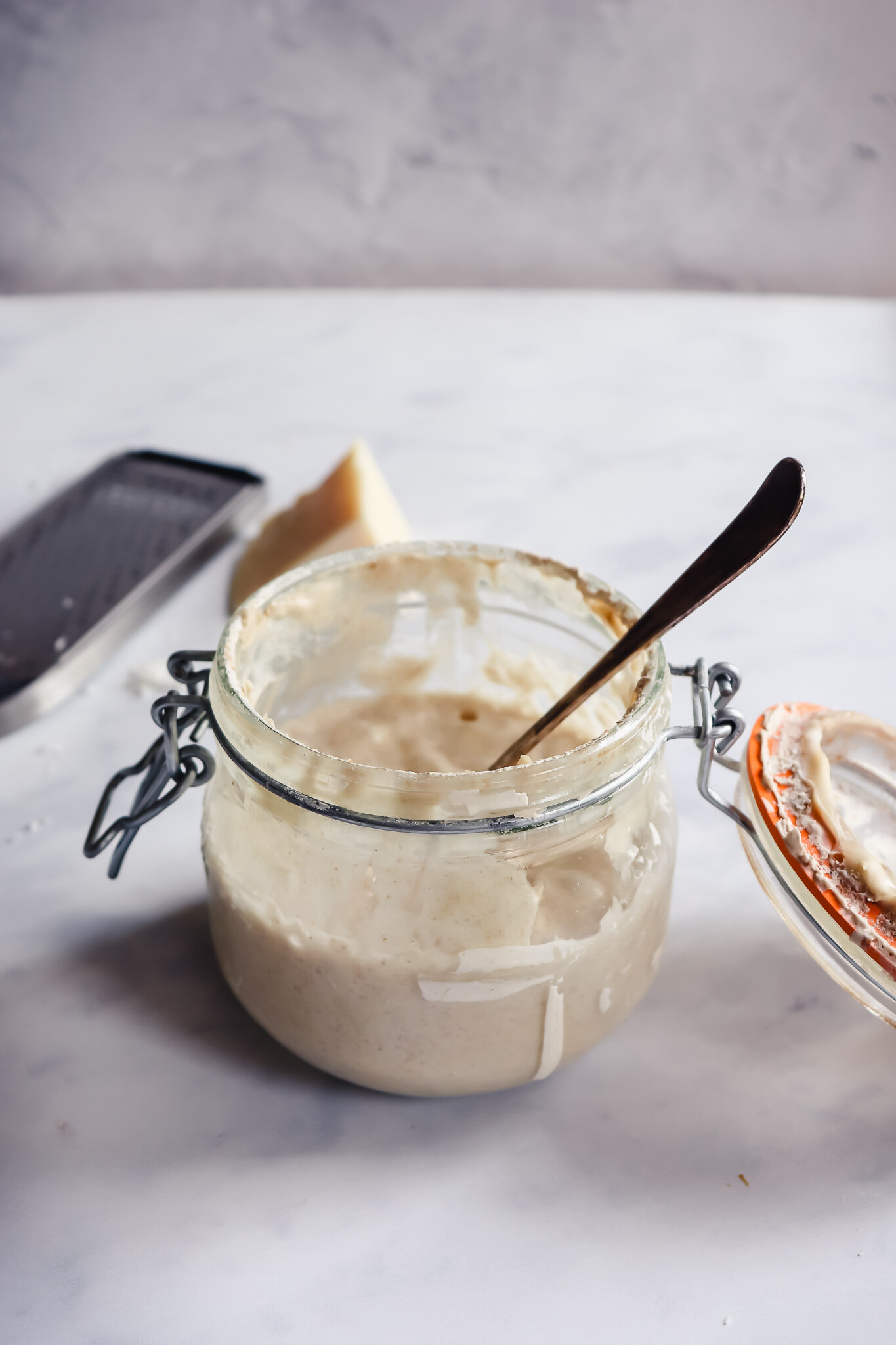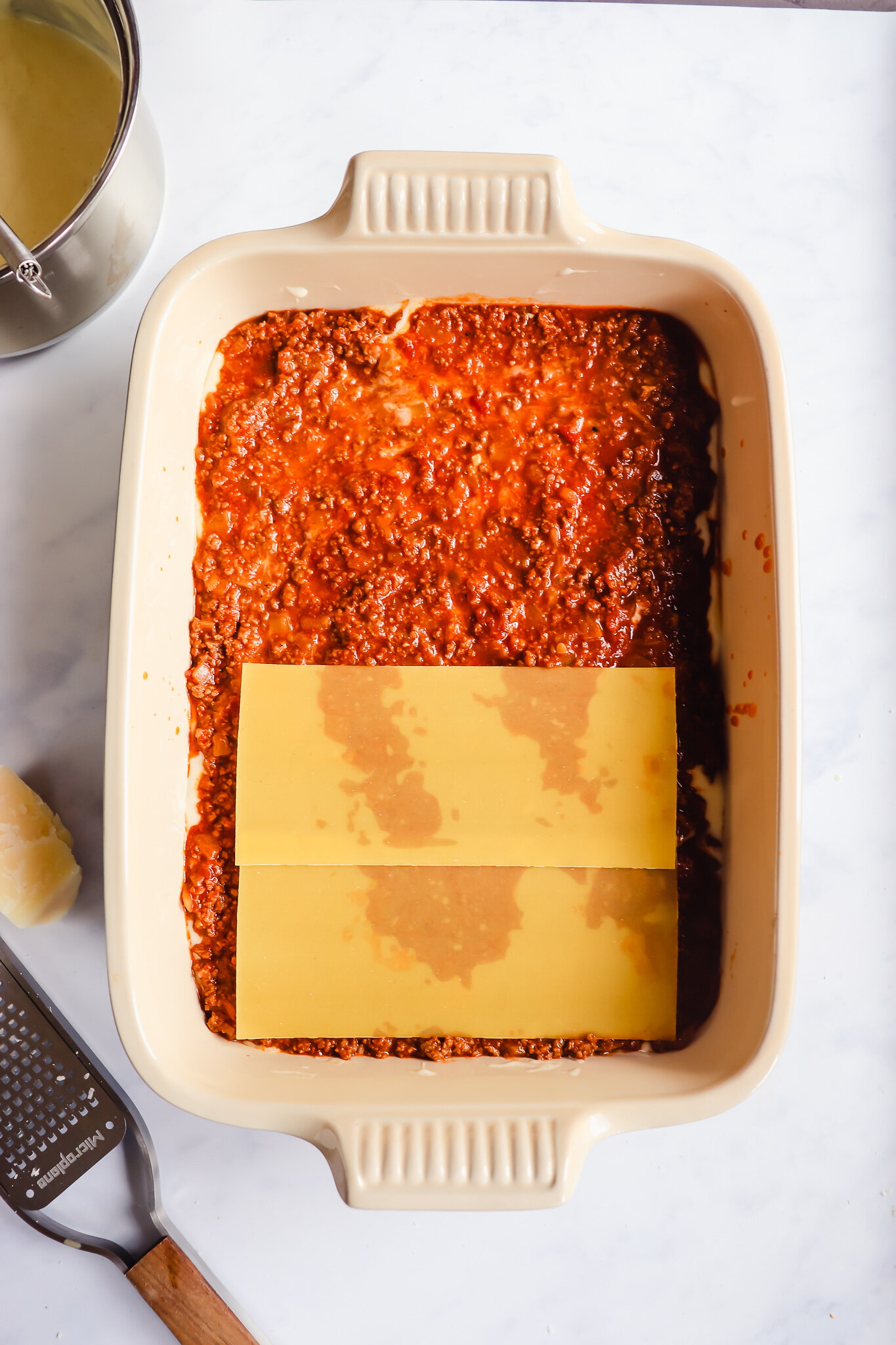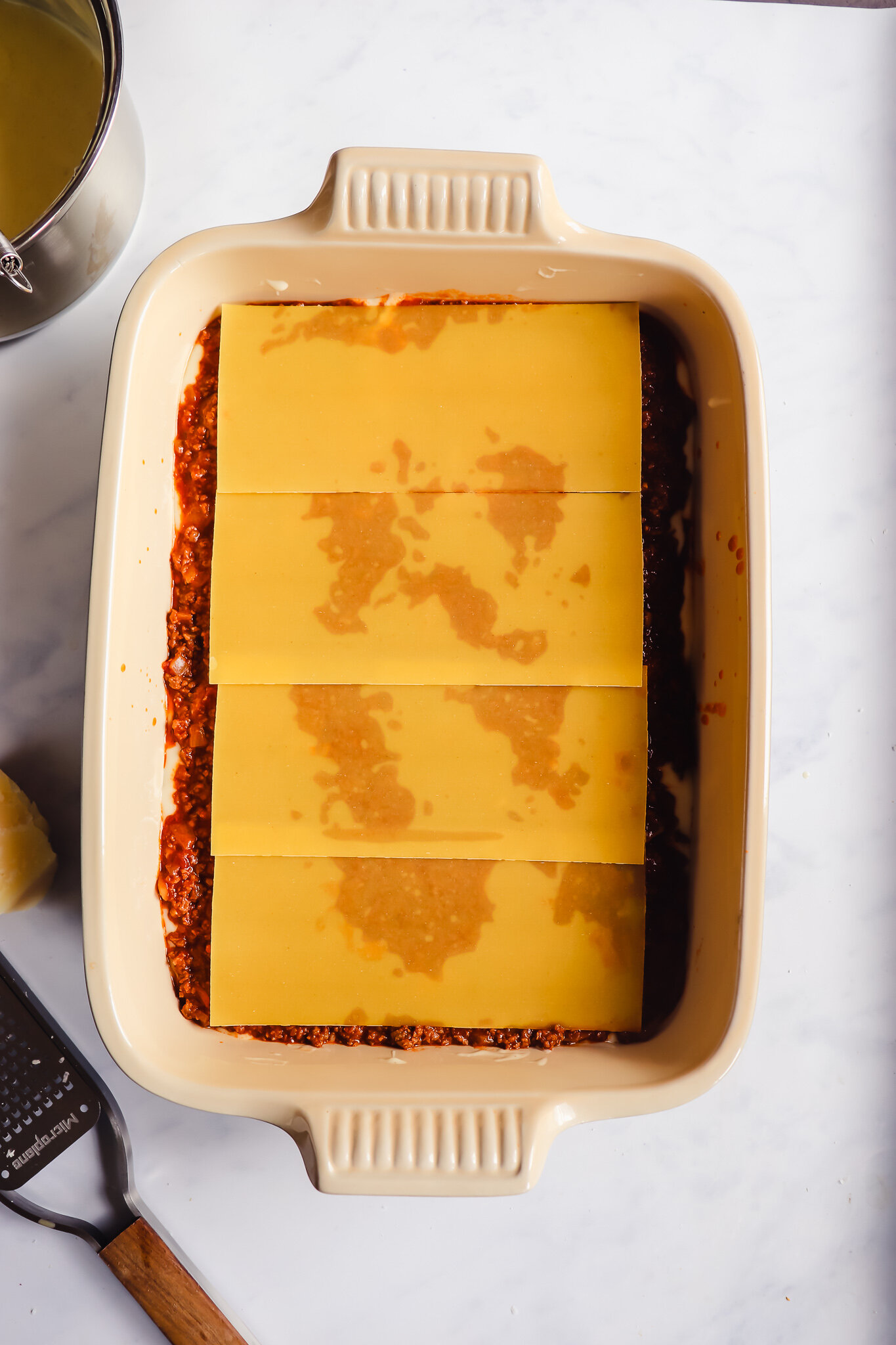The ultimate lasagne with sourdough cheese sauce!
We’ve hit week 11 of lockdown here in the UK; 11 weeks hibernating in our 1 bed apartment, 11 weeks of missing family and friends, 11 weeks of finding and celebrating small joys each day. Like many, I’ve embraced cooking even more than usual to bring a bit of calm and structure into my days, and somewhat predictably, slower days and more time at home has meant that I’ve FINALLY got to grips with baking sourdough bread.
It’s always been my ambition to bake great bread, and I’ve spent years being envious of my friends who are maternal enough to keep with starter cultures alive, having several failed attempted bubbling at the back of my fridge for too long to be salvagable (I’ve since learned that most cultures, no matter how rank they look, are redeemable but the grey sludge scared be from trying in the past). However, for the last 2 months, I’ve mangaged to be a good enough sourdough mother to feed and bake with it weekly, and even though it’s been a process (helpfully guided by Hobbs House Bakery’s Tom Herbert and Edd Kimber’s guides and tips) - the results have been amazing! Truly nothing better than fresh bread. But, as you may have gleaned from the title, this is not a post about how to make sourdough (I still have much to learn!) but a post about how to make delicious things using the discard.
Let’s talk about sourdough discard. In order to keep that lovely starter of yours bubbling and full of life, it needs to be fed with fresh flour regularly (at least once a week if kept in the fridge, and more often at room temparature). Exponetionally adding flour like this means that naturally, you will be producing an ever growing starter that will eventually outgrow it’s jar. Even if you are baking bread a few times a week, you will still be creating more starter than you need. You’ve got two choices here; either decant some of the starter into another jar and gift to a friend, or you’ll need to start discarding. Discarding is simply getting rid of a portion of your starter, so you can keep the feeds of flour at a reasonable size.
The word discard instantly makes me think of waste, which seems criminal, particularly at a time where flour is so scarce. But fear not! There are plenty of clever things you can do with the discarded portion; here are a few favourites:
I’ve been playing around with my discard, throwing it into recipes to see how it responds, and I was overjoyed to see that when substituted for flour in a roux, to make a creamy sauce for a lasagne I was making, it not only formed a thick, smooth sauce but the FLAVOUR was on another level! Yeasty, slightly nutty and the perfect amount of sour to balance the richness of a lasagne.
You can, of course, make the lasagne using an ordinary cheese sauce using flour; I’ve made it this way for years and it is the way bechamel is classically made. But if you are a sourdough person, why not give it a go? It’s a killer sauce with pasta or I’ve even seen a similar sauce on cauliflower cheese (Elly Pear’s recipe here!). The recipe works best with starter which has recently been fed, otherwise the sour flavour can be a little overwhelming.
I don’t think i’ve ever met anyone who doesn’t love lasagne. It was always one of my favourite dishes that my mum cooked for us growing up, a proper comfort food that would bring the family together. Rich, slow cooked beef mince in a tangy tomato ragu, layered up with creamy cheese sauce, sheets of pasta and finished with a heap of grated cheese. I’ve thrown on some sourdough breadcrumbs from blitzing the end of a loaf, for a bit of added crunch too! You can make the ragu and cheese sauce up to 3 days in advance, then simply assemble on the day of eating.
Notes on ingredients:
Beef Mince - I use a 5% beef mince meat in this recipe, but it works equally well with other types of meat too! Ragu made with 50% pork mince and 50% beef mince is especially delicious. You can alternatively use a vegetarian alternative, like Quorn mince.
Lasagne sheets - In the U.K, most dried lasagna sheets do not need to be presoaked or precooked, as the sauce cooks it whilst it is in the oven. Check your packet for cooking instructions, and if in doubt, try to find fresh lasagne sheets.
Seasoning - My secret ingredient is MARMITE! Marmite is a strong, salty yeast extract which adds heaps of flavour to any beef sauces. Boveril or Vegemite work well too. If you aren’t a fan or can’t get hold of it where you live, you can simply leave it out, but you may want to add a touch more salt. Worcestershire sauce is another British ingredient which adds a sweet, spicy tang. If you can’t find it, substitute in a teaspoon of brown sugar and 1/2 teaspoon hot sauce.
Ultimate lasagne with sourdough cheese sauce
Serves 4-6
Ingredients:
1 tablespoon olive oil
1 large onion, peeled and finely chopped
2 cloves garlic, finely chopped
500g minced beef, 5% fat
1 x 400g tin tomatoes
300ml (¾ tin) beef stock
2 tbsp tomato puree
1 teaspoon Worcester sauce
1 teaspoon Marmite
16 sheets dried lasagne sheets (around 400g)
For the sourdough white sauce:
50g butter
100g active sourdough discard (or 50g flour)
650ml milk
1 tsp Dijon mustard
Black pepper
75g parmesan/pecorino
50g sourdough breadcrumbs
Method:
Heat the olive oil over a medium heat in a large saucepan or casserole dish that has a lid (to use later). Once the oil is hot, add the onions and garlic and stirring regularly, fry for 10-15 minutes until soft. You are looking just to soften the onions, rather than colour them.
When the onions are soft, turn the heat up slightly and add the beef mince. Use your wooden spoon to break up any large chunks and fry for 5-10 minutes, until browned all over. Turn the heat down to low and stir in the tomato puree and tinned tomatoes. Measure the beef stock (or add hot water to a stock cube) in the tomato can and add to the mixture, washing any remaining tomato left in the tin into the ragu.
Stir in the marmite and worcestershire sauce, if using, then cover and simmer for at least 45 minutes (up to 3 hours for the most intense, tender sauce!). Once cooked, season to taste, then allow to cool slightly before using or allow to cool completely and refridgerate for up to 3 days.
Whilst the ragu is simmering, it’s time to make the cheese sauce. Melt the butter in a medium saucepan, then whisk in the sourdough discard. It won’t turn smooth like an ordinary roux and may look a little clumpy, but persevere. Cook out the roux for 1-2 minutes, then add a large splash of milk. Whisk vigorously until smooth, then gradually add the rest of the milk, stirring all the time.
Once all the milk as been incorporated, heat the mixture gently until thickened. Stir in the mustard and half the parmesan cheese, and season well with black pepper before removing from the heat. Use straight away or allow to cool completely and chill for up to 3 days.
When you are ready to bake, preheat the oven to 200°C/180°C fan/gas mark 6 and get out a large baking dish (I used a 32cm Le Creuset baking dish). Spread 1/3rd of the ragu into the base of the dish, then top with a layer of pasta. Spread 1/4 of the cheese sauce over the pasta, then repeat the ragu, pasta, cheese sauce twice more. Pour the remaining cheese sauce over the top, making sure the pasta is completely covered, then sprinkle with the remaining parmesan and sourdough breadcrumbs.
Bake for 35-40 minutes until the top is bubbling and golden, and if you pierce it with a knife it slides through the pasta easily. Serve immedietely!










